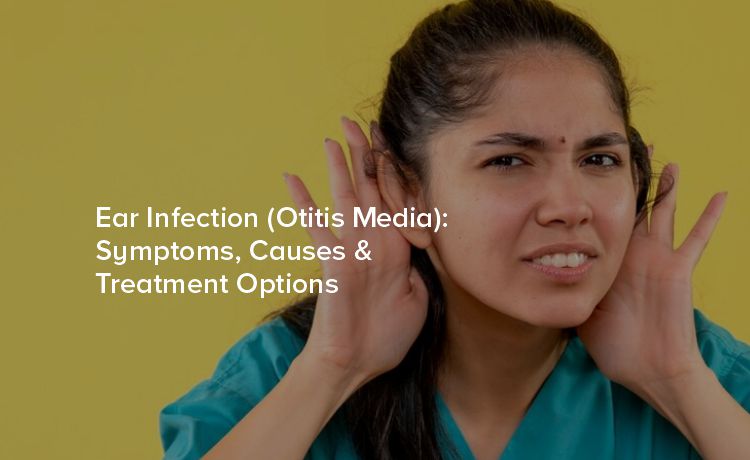
Ear infection, also known as Otitis Media, is a common ailment that can affect individuals of all ages, though they are more prevalent among children. They occur when the middle ear becomes inflamed or infected, often leading to discomfort, pain, and potential hearing difficulties.
Otitis Media refers to an infection or inflammation of the middle ear. The middle ear is the air-filled space behind the eardrum that contains tiny vibrating bones essential for hearing. When this area becomes infected or inflamed, it can lead to a buildup of fluid, causing pain and potentially affecting hearing.
Acute Otitis Media: which acute otitis media may be defined clinic pathologically as inflammation of the middle ear cleft of rapid onset and infective origin. It is associated with middle ear fluid effusion, pain and hard of hearing.
Otitis Media with Effusion: Otitis Media with Effusion is the accumulation of mucus within the middle ear and sometimes the mastoid are cell system. Persistence of the fluid for long in described as chronic. If normally taken 3 months or longer for revolution.
Chronic Otitis Media with Effusion (COME): Chronic inflammation of the middle ear and mastoid cavity is turned as chronic supportive otitis media which presents with recurrent ear discharge or otorrhea through the tympanic membrane perforation. It is divided into chronic otitis media with cholesteatoma (unsafe) and chronic otitis media without cholesteatoma (safe).
The symptoms of an ear infection can vary depending on the type and severity of the infection. Common symptoms signs include:
In Children
Ear Pain: Often the most noticeable symptom, ranging from mild discomfort to severe pain.
Tugging or Pulling at the Ear: Indicative of discomfort or pain.
Difficulty Sleeping: Pain may worsen when lying down, causing sleep disturbance.
Fever: A low-grade fever may accompany the infection.
Fluid discharge: Yellow, clear, or bloody fluid may drain from the ear.
Hearing Problems: Reduced hearing or difficulty responding to sounds.
In Adults
Ear Pain: Similar to symptoms in children’s, adults may also experience sharp or dull pain in the ear.
Fluid Drainage: Noticeable discharge from the ear.
Hearing Loss: Temporary hearing difficulties or muffled sounds.
Pressure or Fullness: A sensation of pressure or fullness in the ear.
Dizziness: In some cases, balance may be affected.
Ear infections can be caused by a variety of factors, including bacterial and viral infections. The following are common causes:
Bacterial Infections
Bacteria such as Streptococcus pneumoniae and Haemophilus influenzae are common culprits of acute otitis media. These bacteria can enter the middle ear through the Eustachian tube, especially during a respiratory infection.
Viral Infections
Viruses like the common cold or flu can lead to ear infections. Viral infections often cause inflammation and blockage of the Eustachian tube, creating an environment conducive to bacterial growth.
Eustachian Tube Dysfunction
The Eustachian tube connects the middle ear to the back of the throat and helps regulate air pressure and drain fluids. When this tube gets blocked or swollen, it can trap fluids in the middle ear, leading to an infection.
Allergies
Allergic reactions can cause inflammation and congestion in the nasal passages and Eustachian tube, increasing the risk of an ear infection.
Certain factors increase the likelihood of developing an ear infection, such as:
Age: Infants and young children are more susceptible due to their underdeveloped Eustachian tubes and immune systems.
Group Childcare: Children in daycare centres are exposed to more germs and infections.
Bottle-Feeding: Babies who are bottle-fed, particularly while lying down, are at higher risk.
Seasonal Factors: Ear infections are more common during the winter and early spring when respiratory infections are prevalent.
Tobacco Smoke Exposure: Exposure to second hand smoke can increase the likelihood of ear infections.
Treatment for ear infections depends on the severity and type of infection. Common approaches include:
Warm Compress: Applying a warm cloth to the affected ear can help relieve pain.
Pain Medications: Medications like acetaminophen or ibuprofen can alleviate pain and reduce fever.
Hydration: Drinking plenty of fluids can help thin mucus and promote drainage.
Antibiotics: If the infection is bacterial, a healthcare provider may prescribe antibiotics. It's important to complete the entire course of antibiotics even if symptoms improve.
Ear Drops: Ear drops can help reduce pain and inflammation.
Myringotomy: In severe or chronic cases, a minor surgical procedure called myringotomy may be performed. This involves making a small incision in the eardrum to drain fluid and relieve pressure.
Vaccination: Ensure that children receive recommended vaccines, such as the pneumococcal and influenza vaccines.
Good Hygiene: Encourage frequent handwashing to prevent the spread of germs.
void Tobacco Smoke: Keep children away from second hand smoke.
Breastfeeding: Breastfeed infants, as it provides antibodies that can help protect against infections.
Ear infections, while common and often treatable, can cause significant discomfort and potential complications if left untreated. Recognizing the symptoms, understanding the causes, and seeking appropriate treatment are essential steps in managing this condition at ENT hospital in Hyderabad.